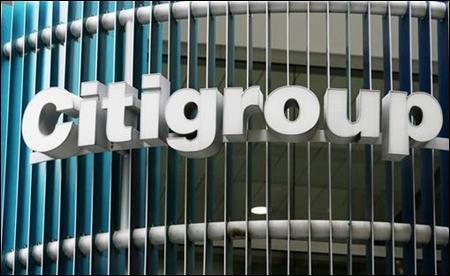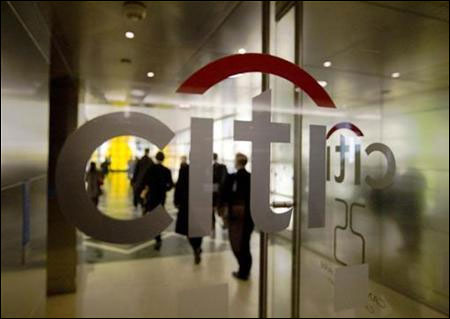 | « Back to article | Print this article |
Citigroup cutting 11,000 jobs, taking $1 bln in charges
Citigroup Inc said it is cutting 11,000 jobs worldwide, delivering the first of what investors expect to be a new series of steps to shrink the bank down to a more manageable and profitable size.
The cuts, which amount to about 4 per cent of the bank's workforce, carry the fingerprints of Citigroup's Chairman Michael O'Neill. A banking industry veteran, O'Neill, 66, has a history of ruthlessly shedding businesses that are not earning enough money.
Investors were expecting O'Neill to launch a similar plan at Citigroup after he pushed out Vikram Pandit and made Michael Corbat chief executive in October.
Speaking at a conference, Citigroup Chief Financial Officer John Gerspach said the cuts announced on Wednesday are "a fairly comprehensive initial foray" for the new leaders, leaving the door open to more reorganization.
Citigroup has been cutting costs since at least 2007, but investors have complained that expenses are not dropping fast enough. Its quarterly operating expenses are similar to their levels in 2006, but quarterly income is now less than half 2006 levels.
The bank announced 96,500 job cuts from 2007 to 2011, behind only the U.S. government and General Motors for layoff announcements, according to outplacement firm Challenger, Gray & Christmas Inc, which tracks U.S. layoffs.
The cuts announced on Wednesday are expected to bring at least $1.1 billion in annual savings starting in 2014, thanks to both job cuts and broader reorganization efforts. The changes the bank is envisioning will also result in revenue falling by about $300 million annually, and will spur some $1.1 billion of charges through the middle of next year.
Earlier reductions, including a 2008 announcement to cut 50,000 jobs, were linked primarily to purging the company of assets that had turned bad in the financial crisis.
More recent job cuts, including 4,500 announced at this time last year, have been aimed more at shrinking Citigroup's costs as the bank became less profitable.
Only 5 per cent of the roughly $1 billion cost of implementing the latest plan is being spent on its Citi Holdings portfolio of bad assets that the company decided to shed after the financial crisis. In that way, Wednesday's announcement is like job cuts this year across many banks and investment firms around the world, including Bank of America Corp, Goldman Sachs Group Inc and UBS AG.
Click on NEXT for more...
Citigroup cutting 11,000 jobs, taking $1 bln in charges
Wide-banking reductions
Corbat, in a memo to employees obtained by Reuters, said he used the company's budgeting process for 2013 to identify ways to streamline the company. "Given the challenging environment, we need to continue to be disciplined in how we allocate our finite resources," Corbat said in the memo.
The cuts cover virtually all of the company's operations, from investment banking and securities trading, to consumer banking and corporate overhead. The company said it will sell or significantly scale back consumer operations in Turkey, Pakistan, Paraguay, Romania and Uruguay.
"We have identified areas and products where our scale does not provide for meaningful returns," Corbat said in a statement. "We will further increase our operating efficiency by reducing excess capacity and expenses."
Nancy Bush, a long-time bank analyst and a contributing editor at SNL Financial, said she expects Corbat will continue reorganizing and cutting jobs for two years. "I look at this as the first cut," she said. "Corbat will be forever digging and looking for places to cut, and inevitably personnel will be the biggest part of that."
Click on NEXT for more...
Citigroup cutting 11,000 jobs, taking $1 bln in charges
Consumer banking cuts
About 35 per cent of the fourth-quarter restructuring charges will be taken in the global consumer banking unit, where 6,200 jobs will be cut, the bank said. About 40 per cent of those layoffs will be in technology and operations support areas.
As it sharpens its focus on 150 high-growth markets, it plans to shed 84 branches in five countries, more than half of them in the United States.
After the restructuring, the bank will have 4,000 branches around the world.
Bush said the bank in the mid-2000s had scattered branches in areas such as Boston and the New York suburbs. "They now need to go back and rethink their whole domestic branch strategy, and international as well," she said.
When Citigroup changed CEOs in October, O'Neill said executives would continue the bank's strategy of paring back to operate core businesses more efficiently. The strategy has included emphasizing business in major urban areas.
Of the announced restructuring charges, about 25 per cent will be taken in the bank's investment and corporate banking businesses, and 10 per cent in transaction services. Some 1,900 jobs are to be cut from those areas, with more than half coming from operations and technology functions that support the businesses.
One goal of the cuts is to eliminate redundant coverage of relationships with corporate clients, long a source of inefficiency at Citigroup, where sometimes multiple bankers handle relationships with companies and pitch them loans, deal advice, securities underwriting and other services.
The moves will "streamline our client coverage model," the bank said.
Another 25 per cent of the charges are for reworking corporate and miscellaneous other functions. About 2,600 jobs are being eliminated from corporate support services, global functions, real estate and the Citi Holdings portfolio of troubled assets that the company is shedding.
The announcement did not say how Corbat intends to organize his executive team or whether he will fill the position of chief operating officer, which was left open when John Havens departed with Pandit.
Even before the Citigroup move, major banks had announced some 160,000 job cuts since early last year, according to a Reuters analysis in November.
Among the largest: Bank of America in September 2011 announced 30,000 layoffs as part of a plan to reduce annual expenses by $8 billion. That bank is also closing or selling 750 branches.

© Copyright 2025 Reuters Limited. All rights reserved. Republication or redistribution of Reuters content, including by framing or similar means, is expressly prohibited without the prior written consent of Reuters. Reuters shall not be liable for any errors or delays in the content, or for any actions taken in reliance thereon.


